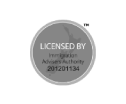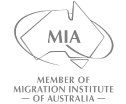For skilled professionals pursuing Australian migration pathways like the Skilled Independent visa (subclass 189) or Skilled Nominated visa (subclass 190), bridging visas serve as critical transitional mechanisms during application processing. These temporary visas maintain lawful status when your substantive visa expires before a decision on your new application. Understanding the operational differences between Bridging Visa A (BVA), Bridging Visa B (BVB), and Bridging Visa C (BVC) directly impacts your ability to work, travel, or remain compliant during processing periods.
Core Functions of Each Bridging Visa Type
Bridging Visa A: Maintaining Continuous Lawful Stay
The Bridging Visa A (BVA) activates automatically when you apply for a substantive visa onshore before your current visa expires. This is particularly relevant for skilled professionals transitioning between visas—for example, moving from a Temporary Skill Shortage (TSS) visa to permanent residency. Key characteristics:
- Work rights: Typically retains work rights equivalent to your previous substantive visa
- Travel restriction: Prohibits international travel; exiting Australia invalidates the BVA
- Activation: Only valid after your previous substantive visa expires
- Duration: Remains active until decision on your substantive application (e.g., GSM visa)
Bridging Visa B: Essential International Travel Authorization
The Bridging Visa B (BVB) is the only bridging visa permitting international travel and re-entry to Australia. Applicants must already hold a BVA or substantive visa before applying. Critical considerations:
- Application requirement: Must be actively requested with justification (e.g., business conferences, family emergencies)
- Travel window: Specifies exact departure/return dates (typically granting 3-12 months)
- Work rights: Maintains same conditions as your underlying BVA
- Validity: Automatically ceases if your substantive visa application is decided while abroad
Bridging Visa C: Correcting Unlawful Status
The Bridging Visa C (BVC) applies to individuals who applied for a substantive visa after becoming unlawful (typically exceeding 28 days past visa expiry). This is less common for skilled migrants but critical if administrative delays occur:
- Restricted entitlements: Usually carries “No Work” and “No Travel” conditions
- Pathway to restoration: Requires demonstrating compelling reasons for the lapse
- Limited applicability: Only available if you applied for a substantive visa while unlawful
Operational Comparison: Privileges and Restrictions
| Feature | BVA | BVB | BVC |
|---|---|---|---|
| Work rights | Retains previous rights | Matches BVA conditions | Typically prohibited |
| International travel | Not permitted | Allowed with authorization | Not permitted |
| Cost | No application fee | AUD$160 application fee | No application fee |
| Application timing | Automatic upon eligible application | Requires separate application | Automatic upon eligible application |
Strategic Considerations for Skilled Professionals
Managing Critical Transitions
- Visa expiration planning: Always apply for your next substantive visa at least 2-3 months before current visa expiry to secure BVA rights
- Offshore applicants: If entering Australia while awaiting a decision (e.g., on a Visitor visa), you can become eligible for BVA upon entry if your skilled visa application meets onshore grant requirements[^5]
Addressing Work Rights Uncertainty
Bridging visas generally inherit work rights from your previous substantive visa. For skilled professionals:
- If transitioning from a TSS visa, BVA typically maintains full work rights
- If moving from a Visitor visa, expect “No Work” conditions until substantive visa approval
- Always verify conditions via VEVO within 72 hours of BVA activation
International Travel During Processing
For skilled migrants requiring offshore travel during processing:
- Hold BVA or substantive visa at time of BVB application
- Provide documented evidence of travel necessity
- Apply at least 3 weeks before departure through ImmiAccount
- Verify BVB grants multiple entries if needed (single-trip vs. multi-trip options)
Critical Compliance Risks
Unintended Unlawfulness
- Applying for a skilled visa after current visa expiry invalidates BVA eligibility, forcing reliance on BVC with restricted rights
- Allowing your BVB to expire while offshore terminates your right to return on that visa
Processing Time Realities
Average skilled visa processing times (6-18 months) create extended bridging periods:
- Monitor ImmiAccount for updates to avoid missing requests
- Report changed circumstances (e.g., new job offer) within 14 days
- BVB applications may take 4-8 weeks—apply well before travel
Proactive Planning Recommendations
- Dual application strategy: If nearing visa expiry, consider lodging subsequent applications simultaneously for backup bridging eligibility[^3]
- BVB pre-approvals: Secure multi-entry BVBs before booking long-term travel
- Compliance audits: Verify visa conditions quarterly via VEVO
- Professional consultation: Engage MARA-registered agents for complex transitions (e.g., TSS to ENS with dependents)
Bridging visas function as procedural safeguards, not immigration outcomes. Maintaining meticulous records of application timelines, visa conditions, and correspondence with the Department of Home Affairs provides stability during the skilled migration journey. For professionals navigating competitive points-based systems, precise bridging visa management ensures uninterrupted residence while awaiting permanent status confirmation.










